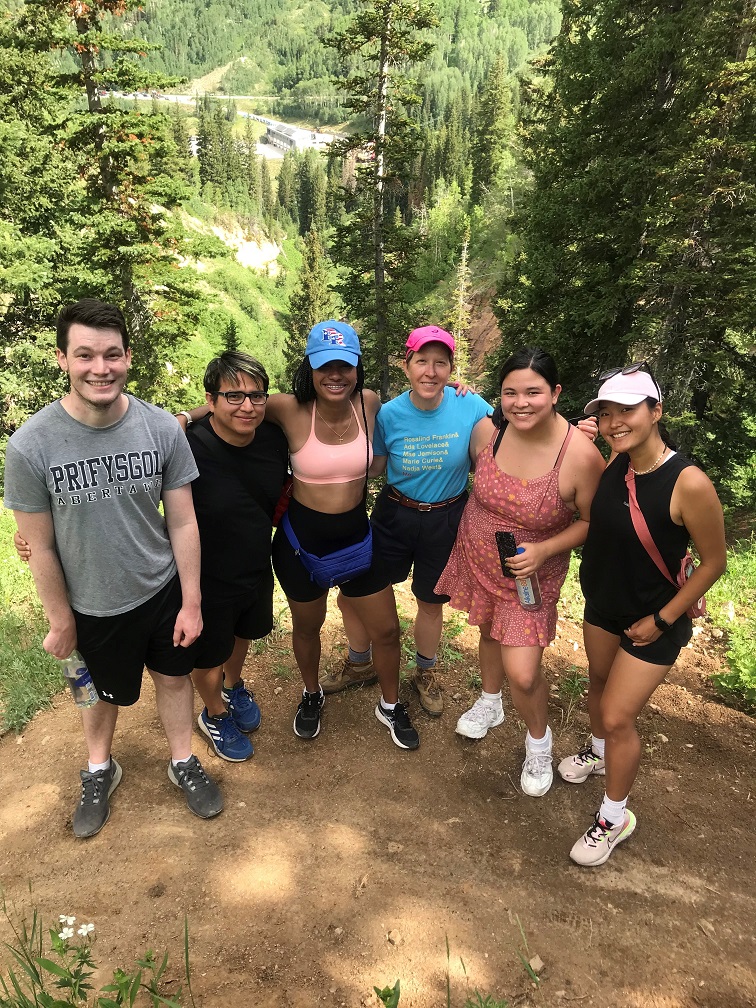Project Background
Students in introductory STEM courses often have concerns about whether they will be academically successful in large university courses, but many have an additional concern that maybe “people like me don’t belong in this course.” This concern is called belonging uncertainty and is related to the insecurity someone feels because of their identities. While the transition to college is challenging for most students, this challenge may be increased for students from under-resourced or underrepresented groups who may feel alienated by the institution’s cultural norms and therefore experience low or uncertain belonging. These belonging concerns may be especially acute in large, primarily lecture-based, introductory STEM courses, where rigorous coursework is combined with an unfamiliar learning environment in that the course size is larger than with what students are accustomed, and there are limited opportunities for individual interaction with the instructor during class. In our group, we are studying the effect that course-level student belonging has on student performance and retention in the course. We have found at two different institutions, course-level belonging affects student performance in large general chemistry courses. Expanding upon these studies, we are interested in understanding the mechanism of how social belonging affects course performance and retention. One step in determining the mechanism is to explore the characteristics of the course that students use when describing their sense of belonging. Our goal is to help instructors create course environments that support and encourage all students to reach their potential and continue to pursue careers in STEM or healthcare.
Student Role
The student will be studying open-ended responses from the belonging surveys to determine characteristics students use to describe their course-level belonging. Both qualitative and quantitative methods of education research will be used, with qualitative analysis being primary. Qualitative research being collaborative, the student, while having their own project component, will be part of a research subgroup. In examining the open-ended survey responses, the primary responsibility is developing a codebook, which includes the following steps. First, themes or ideas (called categories) relevant to the research questions are identified by reading random samples; samples are examined until no more themes emerge. Simultaneously, the research subgroup will meet with me to compare themes and discuss example responses. Next, these initial themes are iteratively sorted, refined, and grouped into broader categories and definitions for each category are created, again meeting weekly to discuss these ideas for consensus. After refinement, the research subgroup will independently code a random sample to validate the final codebook. After coding the remaining responses, the student will transform the qualitative coded data into quantitative frequency data, exploring the frequency of each code and any frequency variation based on student characteristics such as identity, belonging, and performance. Any differences will be studied using statistical tests such as chi-square tests. The student will become familiar with modern qualitative methods and be introduced to quantitative statistical methods, while working collaboratively with other group researchers and learning how to analyze, discuss, and present education-research data.
Student Learning Outcomes and Benefits

Regina Frey
My mentoring goals are to meet each student at their level of research development/experience and help them move to the next level of becoming an independent researcher, to assist them in exploring their interests and help them develop these interests into a career path, to create an inclusive and encouraging learning environment, and to establish an equitable, caring, and supportive relationship to ensure each student reaches their own potential. Essential mentor characteristics needed to accomplish my goals are being honest, compassionate, and respectful. Effective mentoring requires being accessible, a good listener, and committed to high-quality interactions.
I work closely with each of my students. I have weekly scheduled meetings with each of my researchers to discuss their progress, and to encourage them to discuss both their successes and their concerns in the research. Especially for young researchers, I set up a comfortable and growth-mindset environment in our meetings (and in the group). Few students have exposure to education research during their undergraduate career unlike other lab-based research, which they see some in their laboratory courses. Hence, I strive to show them via talks, literature, and working with my group what conducting research on teaching and learning entails. I also show the career opportunities a person with a Ph.D. in STEM education research has (such as an instructor in various environments, a tenure-track faculty member with a research group, a faculty developer, a high-school teacher, or a researcher) by including collaborators with these careers in our weekly group meetings and projects.
